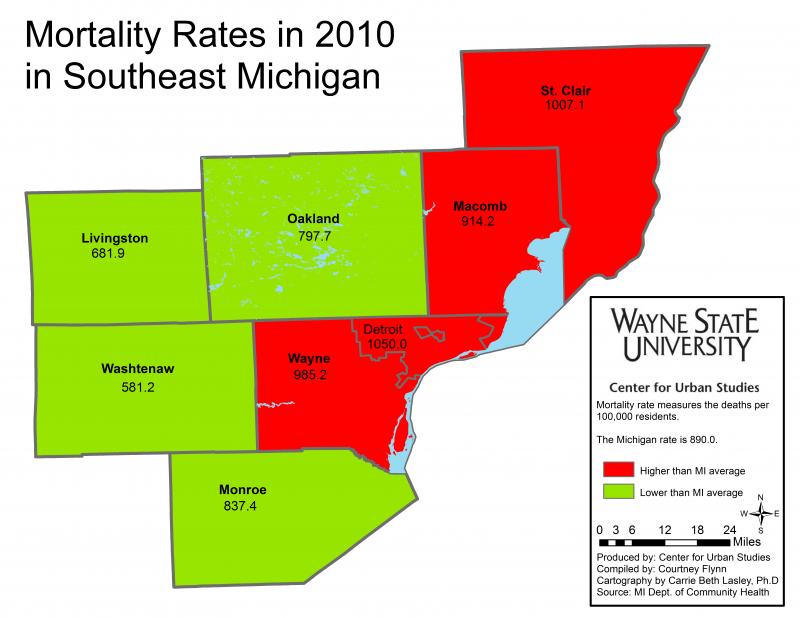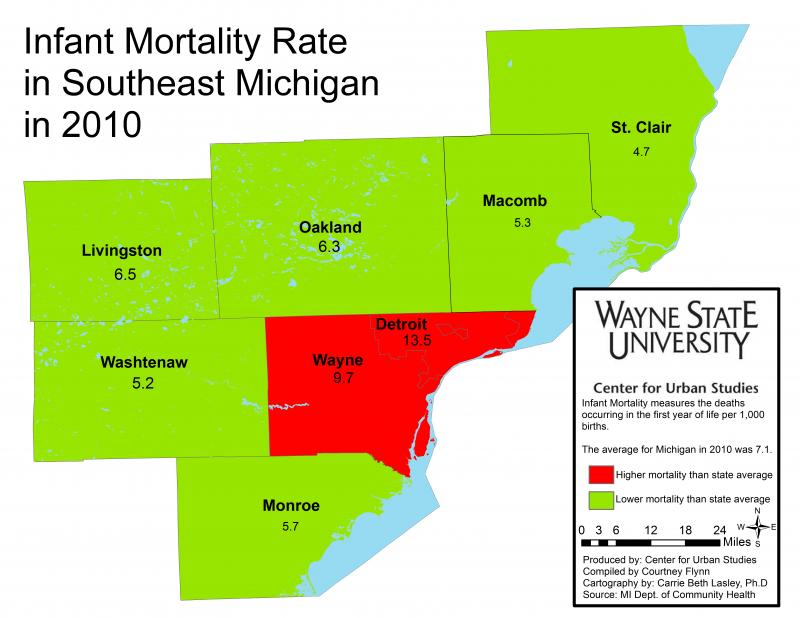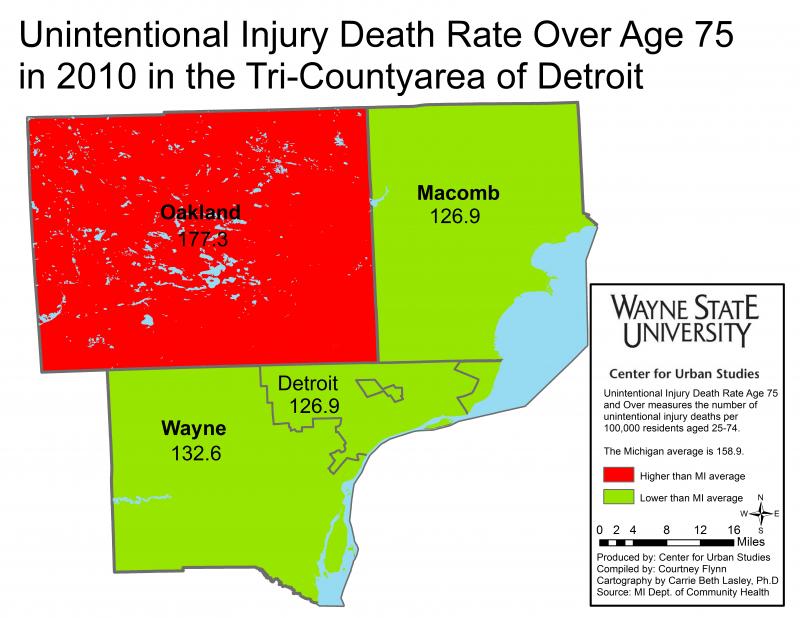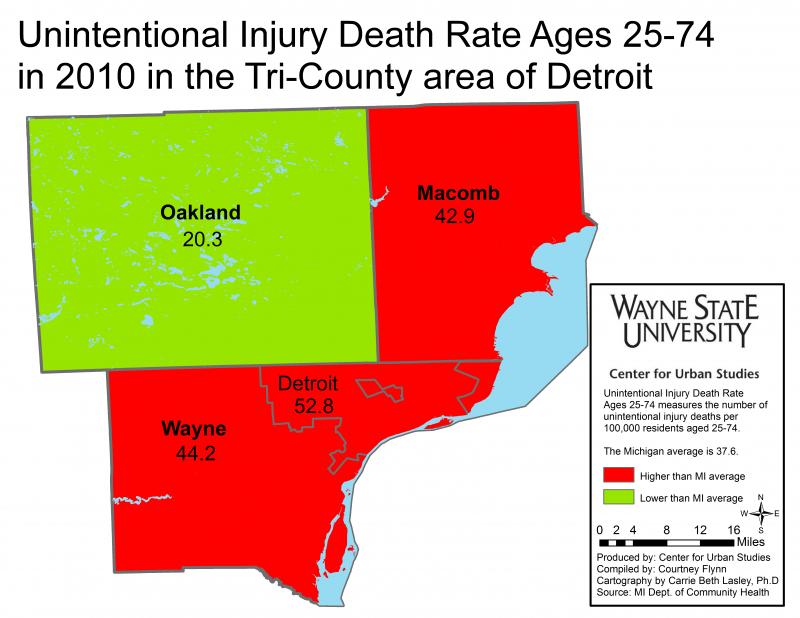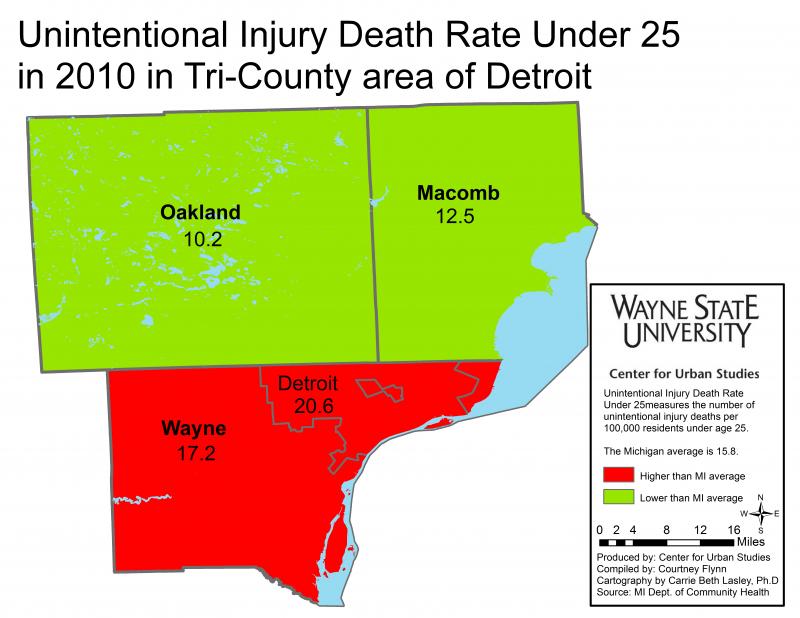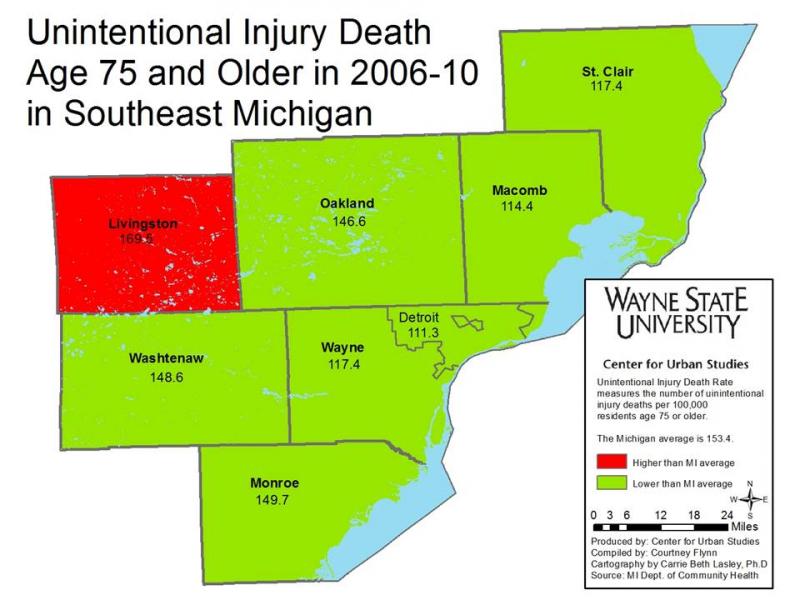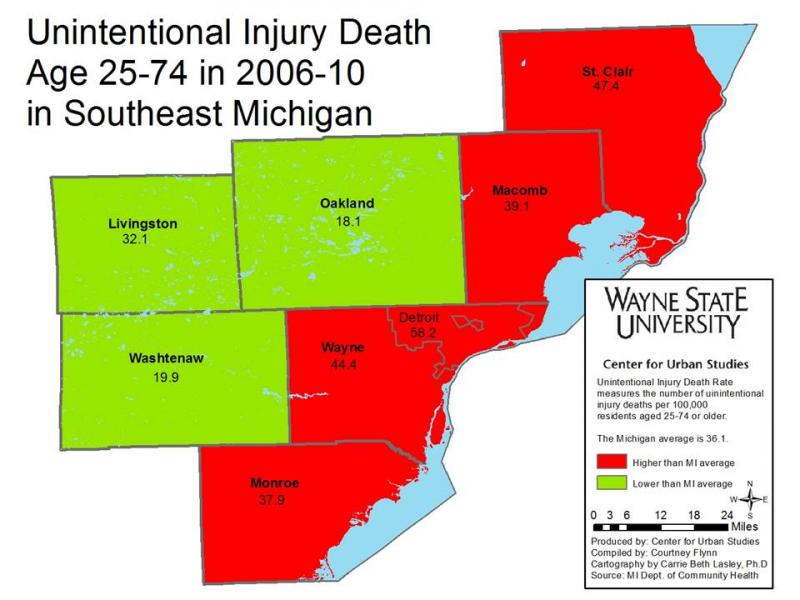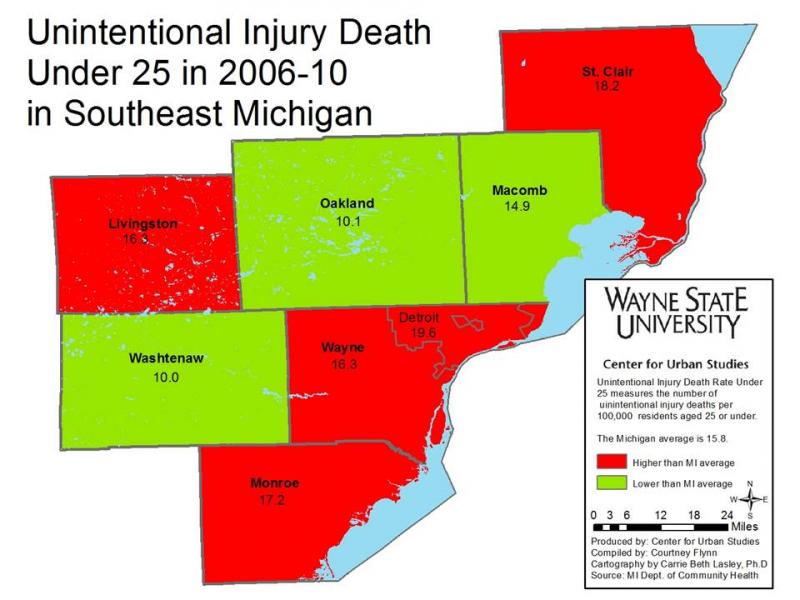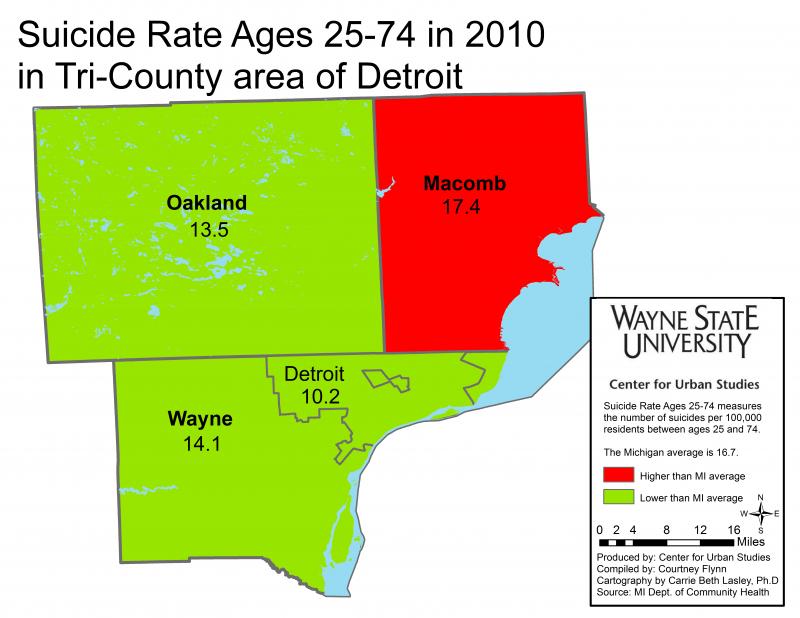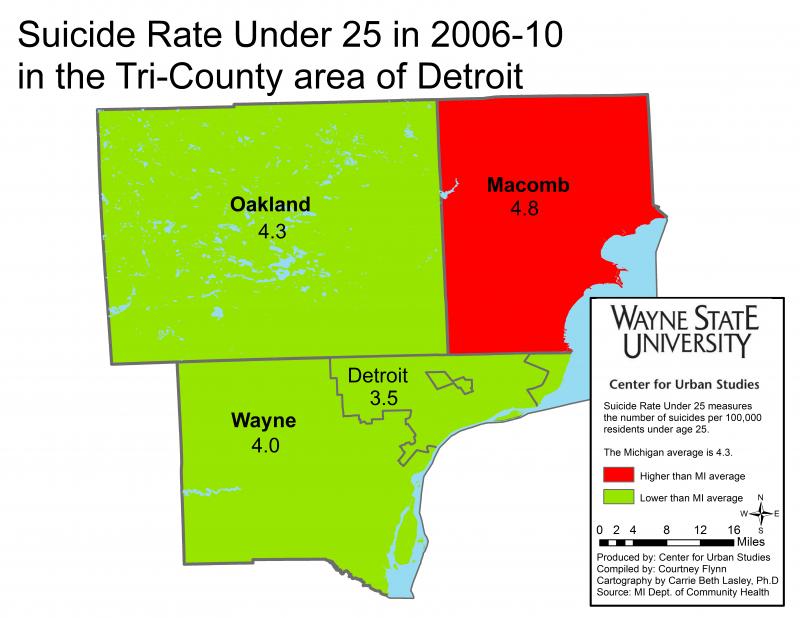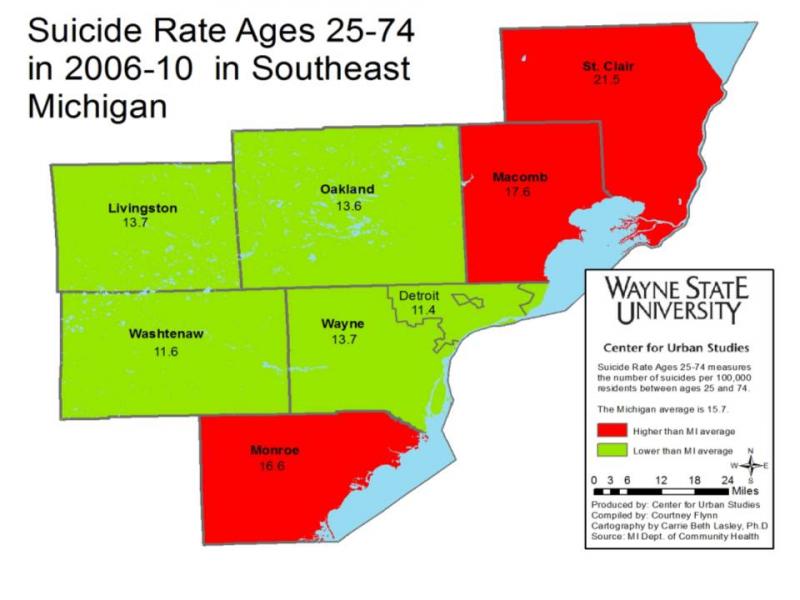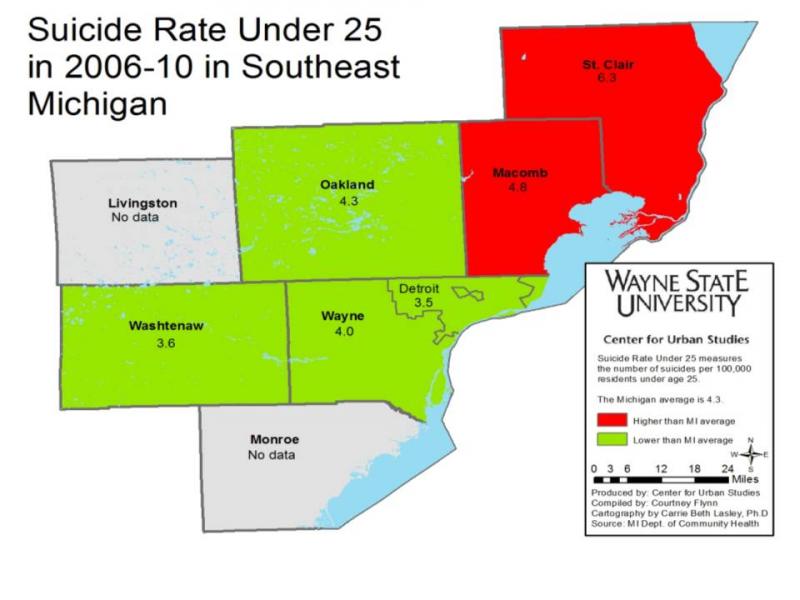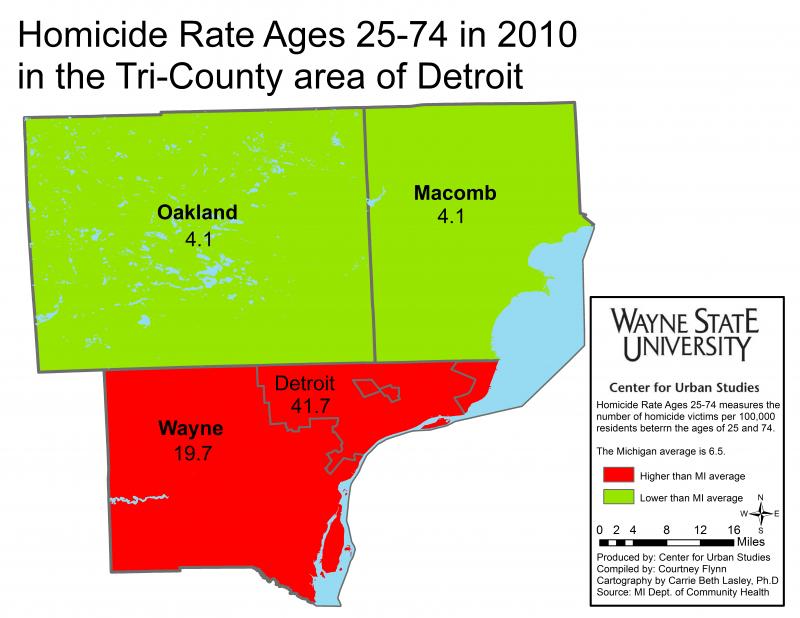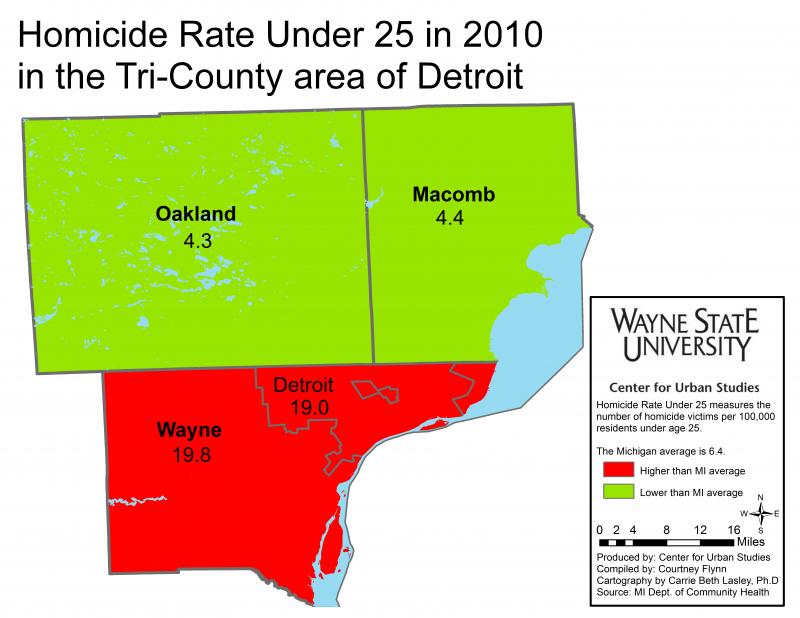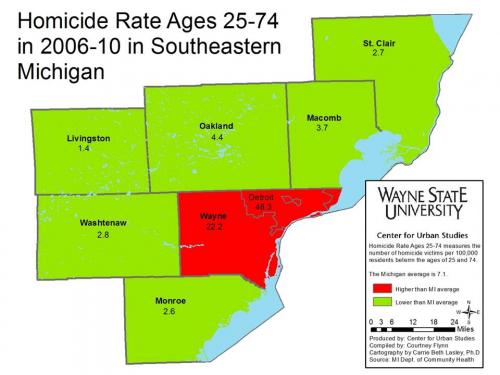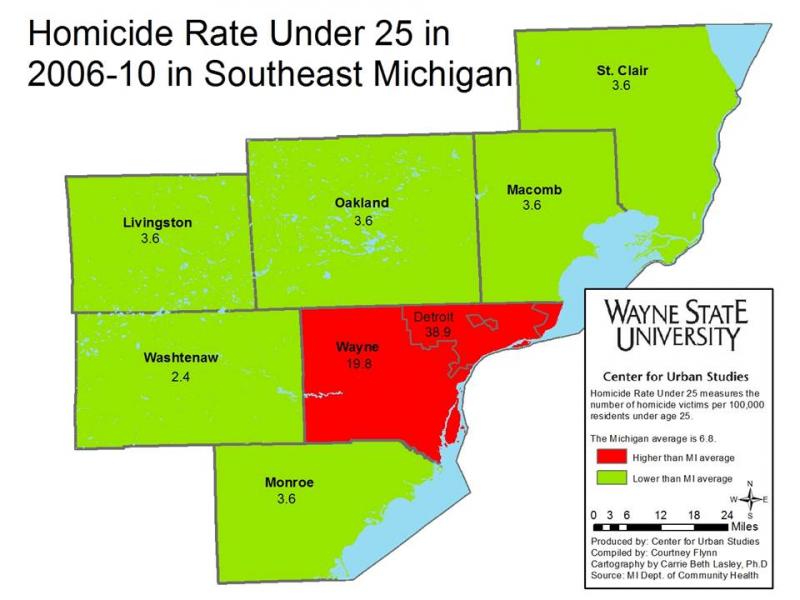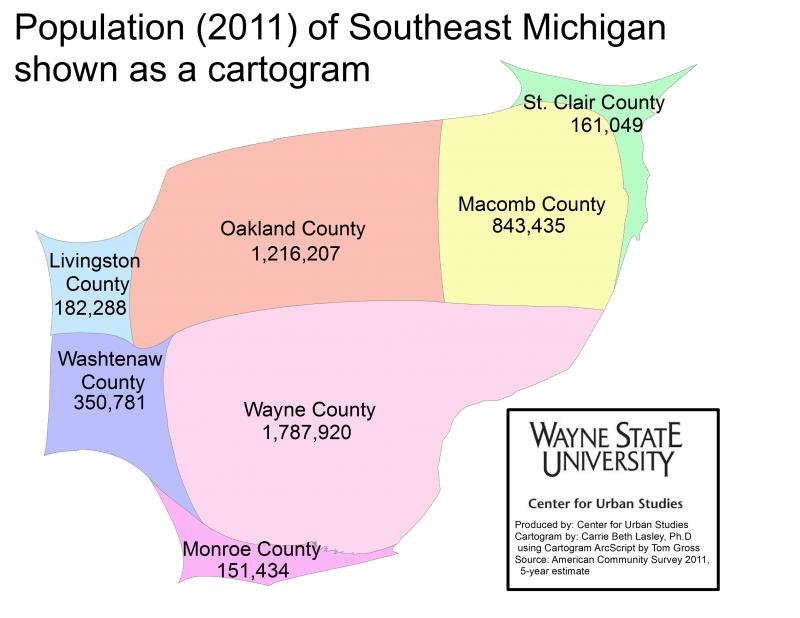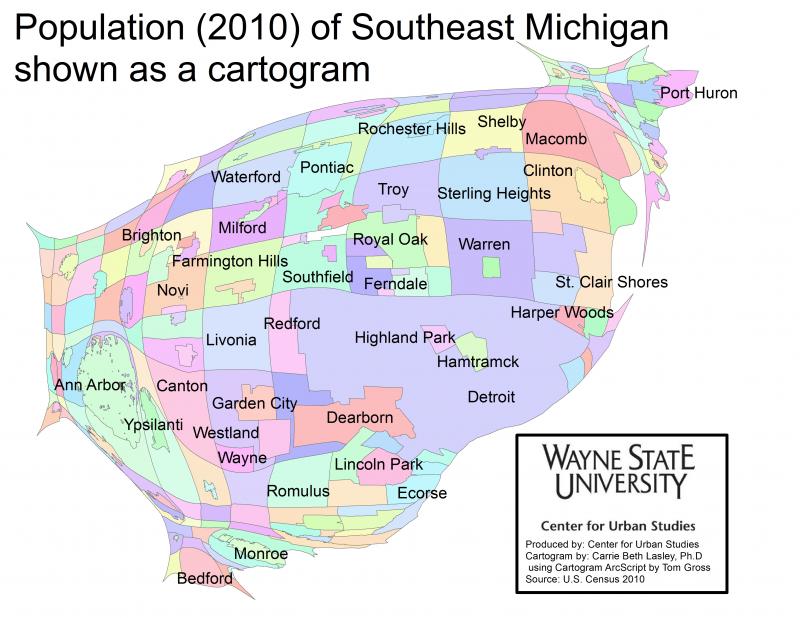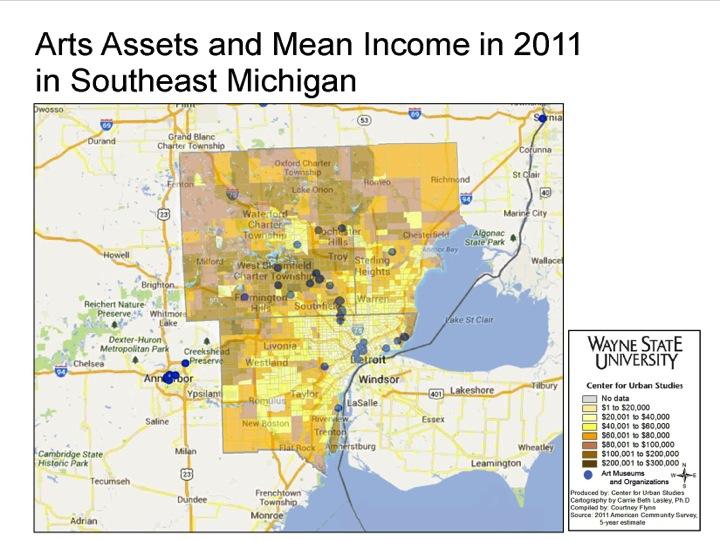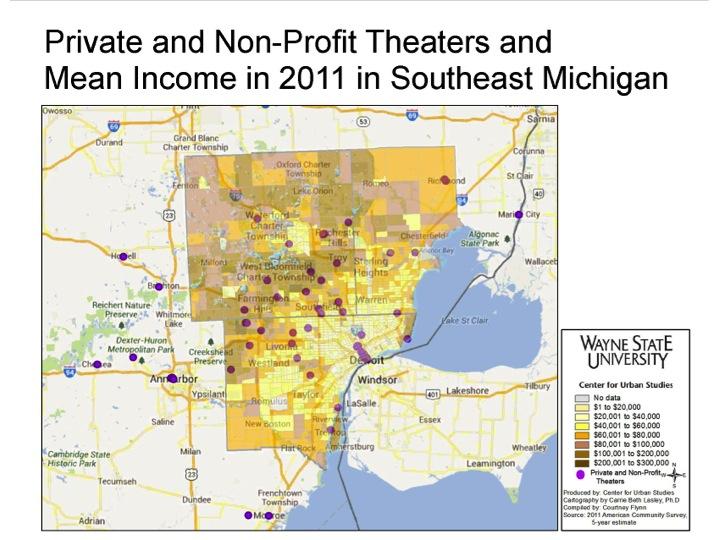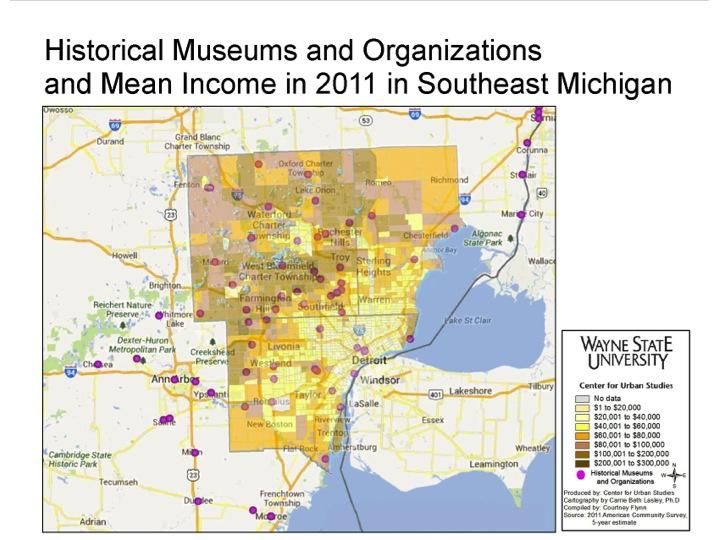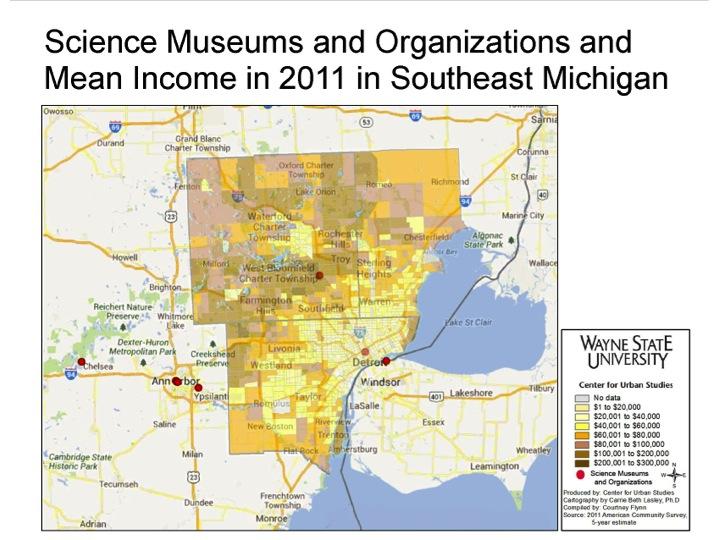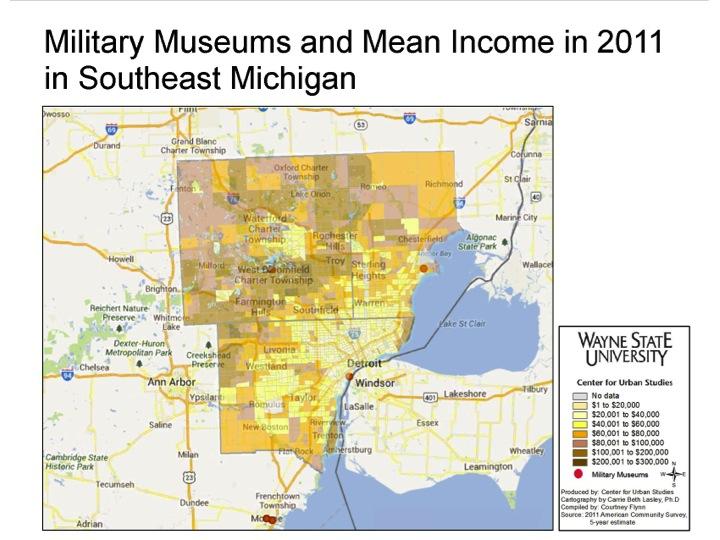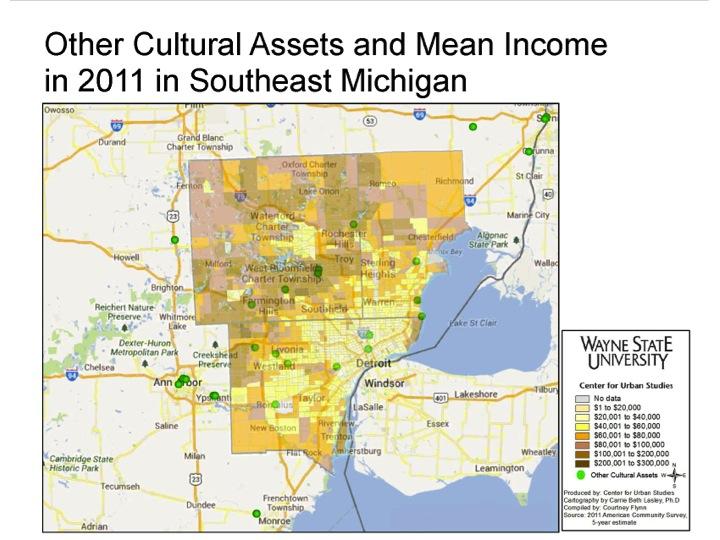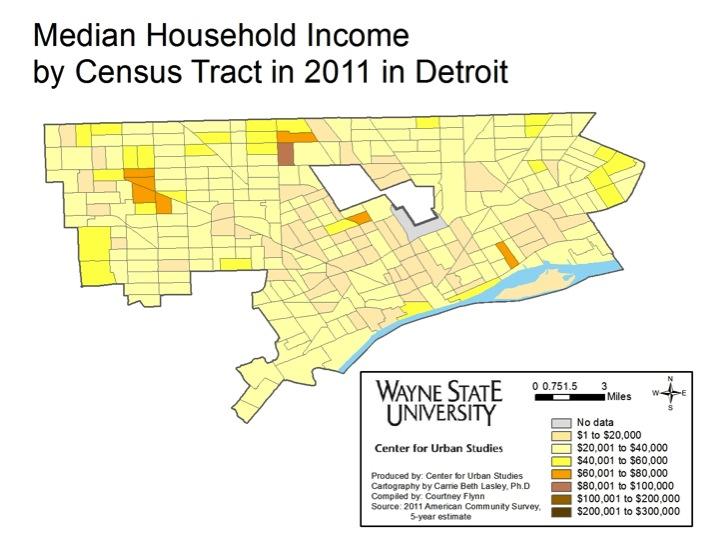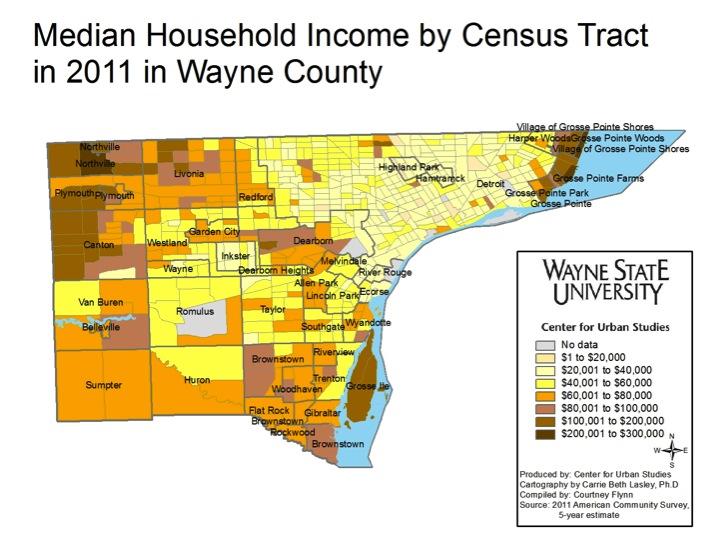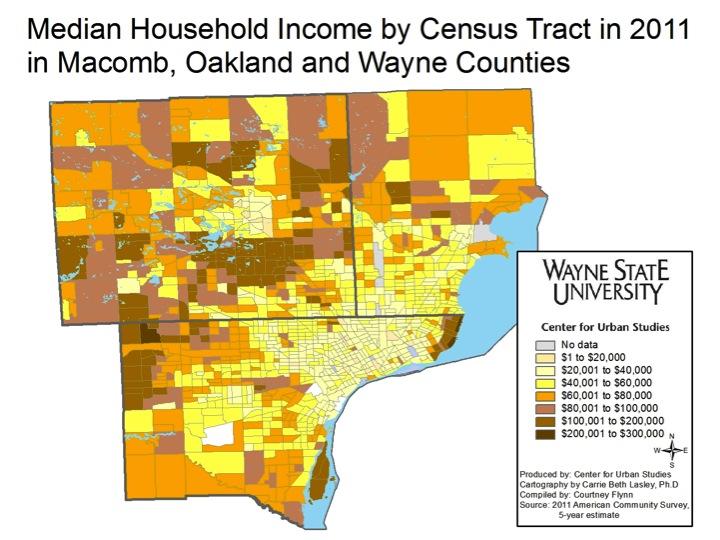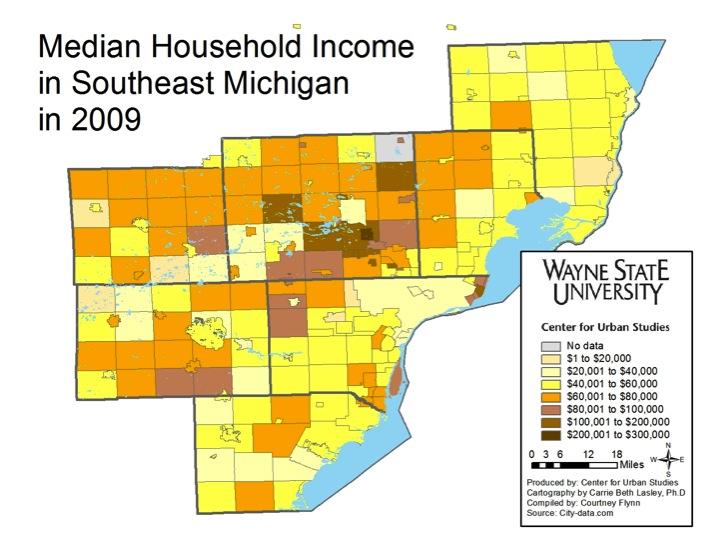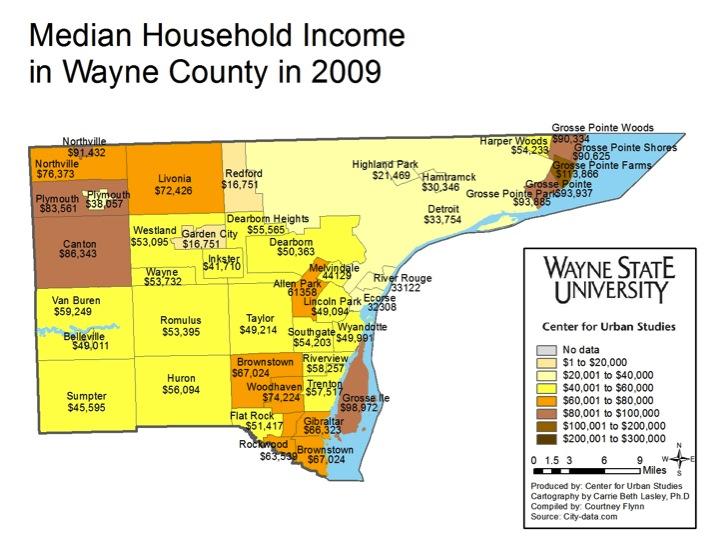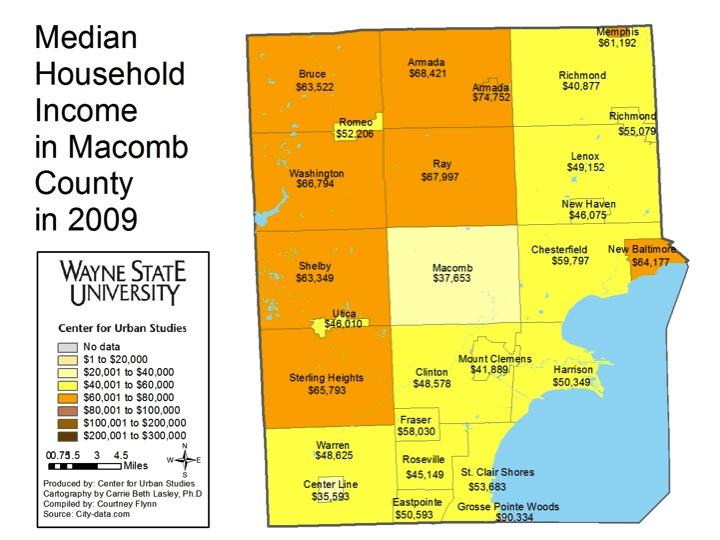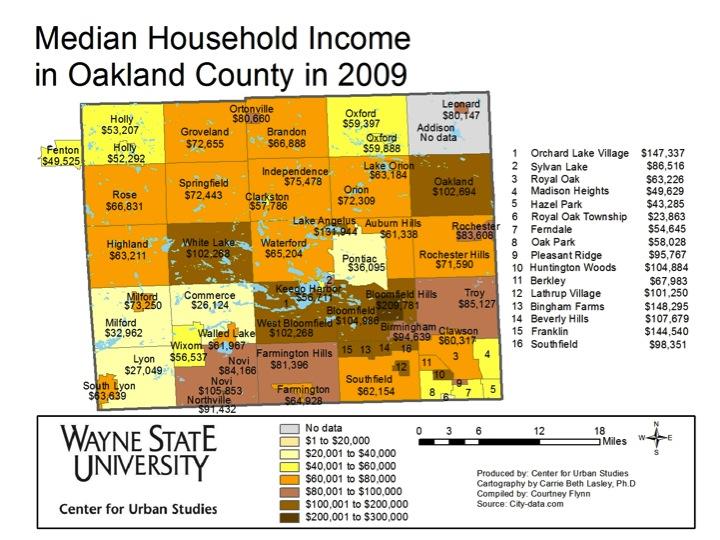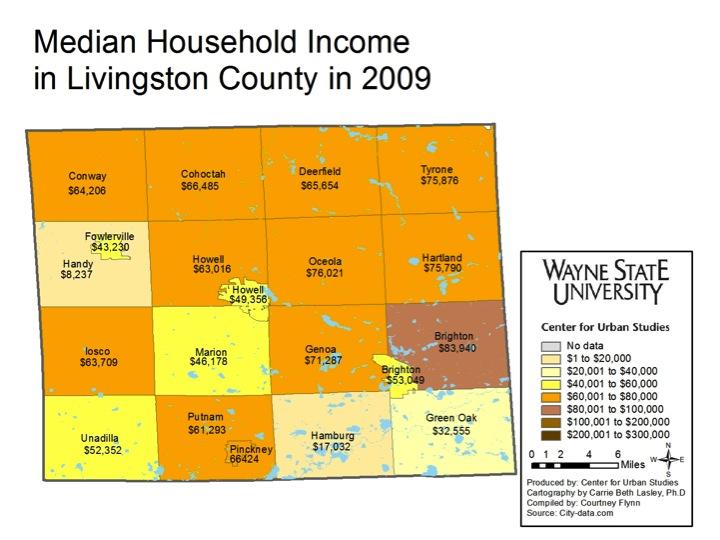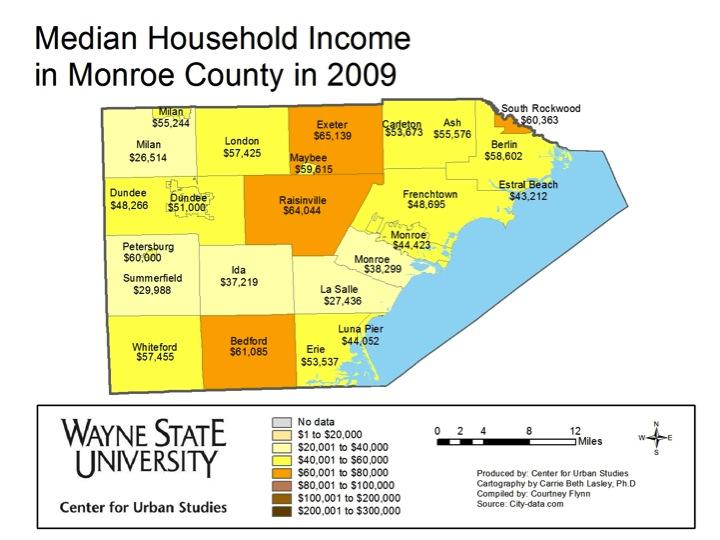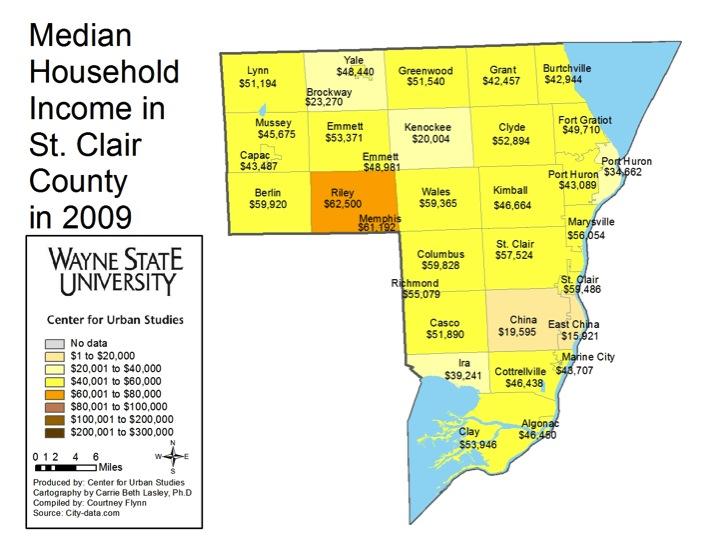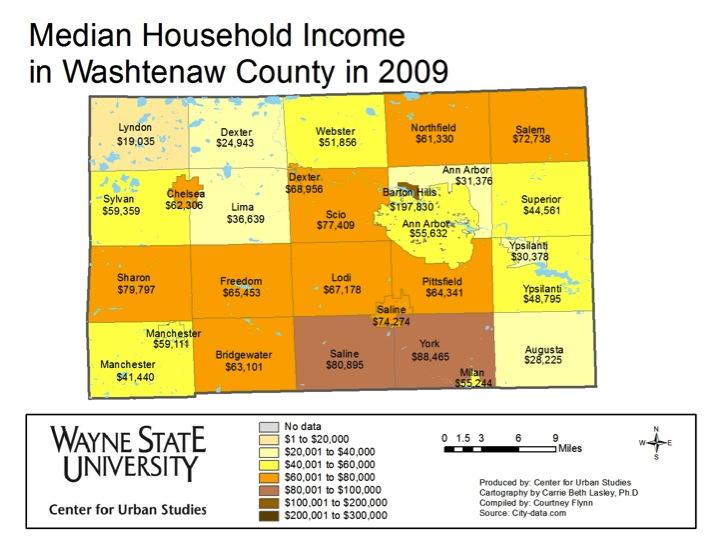This post portrays regional mortality rates related to disease, in particular, cancer, heart disease and Alzheimer’s disease.
The cancer mortality rate for those above the age 75 was the highest of the three diseases presented below. Alzheimer’s disease was the only illness presented below where none of the counties in Southeastern Michigan has a mortality rate above the state average. From 2006-2010, the rolling average mortality rate related to Alzheimer’s disease for the State of Michigan was recorded at 22.7 deaths per 100,000 residents. Macomb was highest in the region at 20.9.
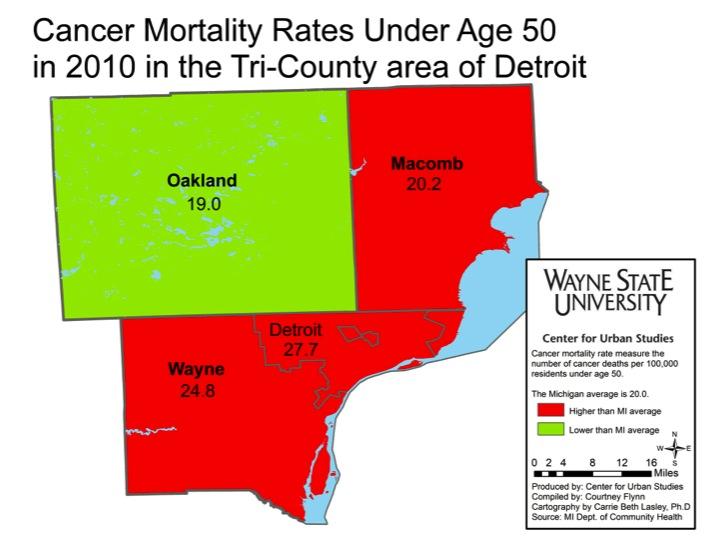
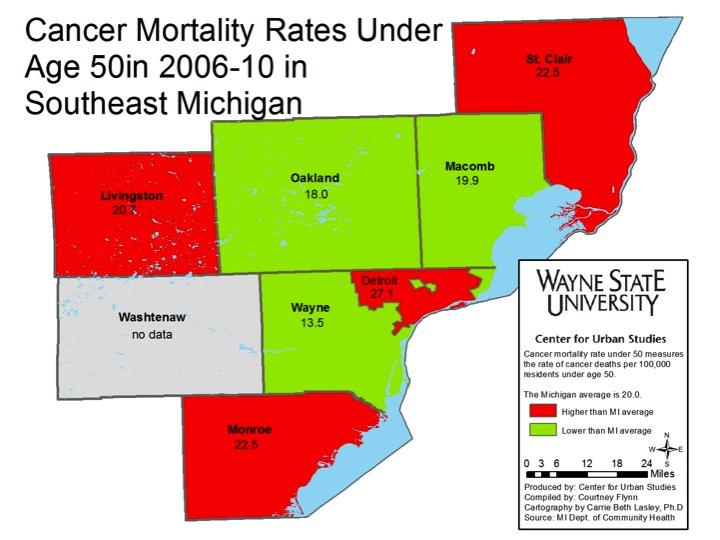
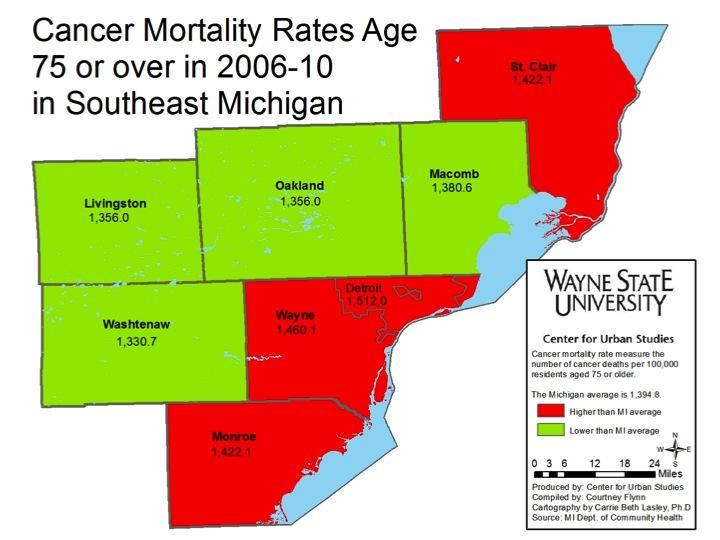
The mortality rate for those 75 or older with cancer is about 150 times higher than those below the age of 50. For example, in the City of Detroit the mortality rate for those above the age of 75 with cancer was 1,512 per 100,000 residents from 2006 to 2010. For those below the age of 50 the mortality rate was 27.1 per 100,000 residents for the City of Detroit during the same time frame.
On all three maps, Oakland County was below the state average for the mortality rate related to cancer. Mortality rates related to cancer for the City of Detroit, however, were consistently above the state average, across age group and time.
The Michigan Department of Community Health did not document cancer mortality rates for those between the age of 51 and 74.
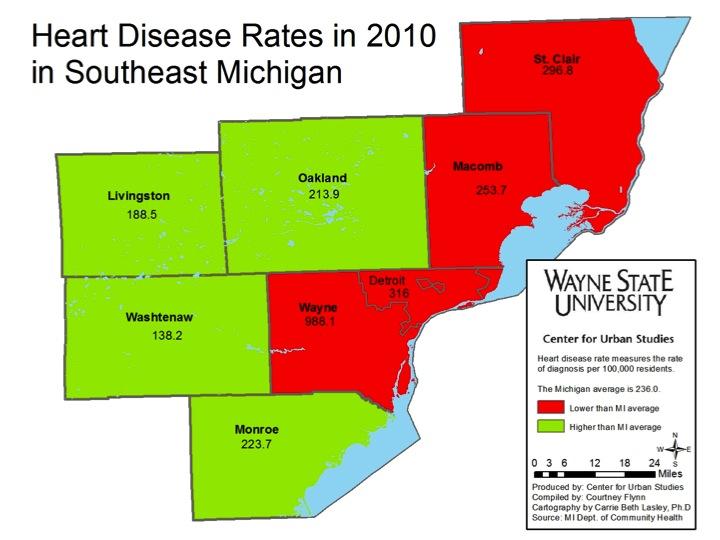
Heart disease is another illness where Detroit was again above the state average, but in this case lower than Wayne County as a whole. In 2010, according to the Michigan Department of Community Health (MDCH), there were 236 deaths related to heart disease in the State of Michigan. In comparison, MDCH reported 316 deaths in Detroit and 988 deaths per 100,000 residents in Wayne County related to heart disease in 2010. Washtenaw County was on the opposite end of the spectrum with a mortality rate related to heart disease recorded at 138.2 per 100,000 residents.
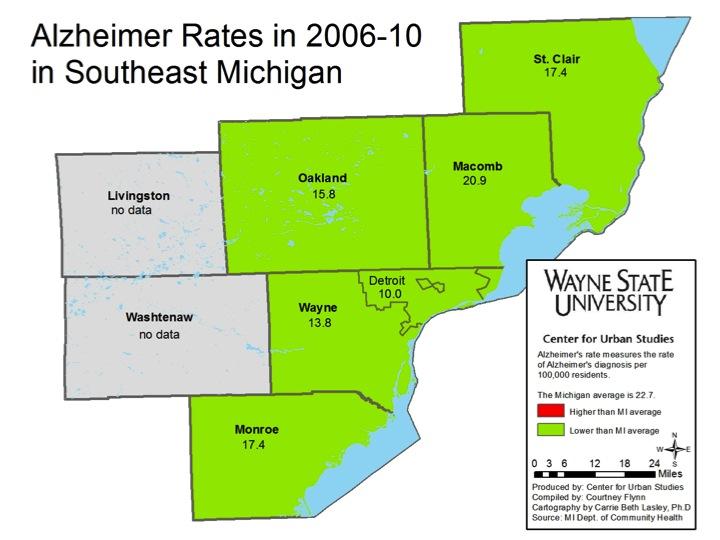
Of the three types of diseases presented, Alzheimer’s disease had the lowest mortality rates. According to MDCH, the state average was 22.7 Alzheimer’s related deaths per 100,000 residents from 2006-10. None of the areas presented on the map were at or above the state average. Macomb County had the highest rate at 20.9 while Detroit had the lowest at 10 deaths per 100,000 residents.
Information for Livingston and Washtenaw counties was not available because the state reported it had not collected enough data to determine an accurate rate.
